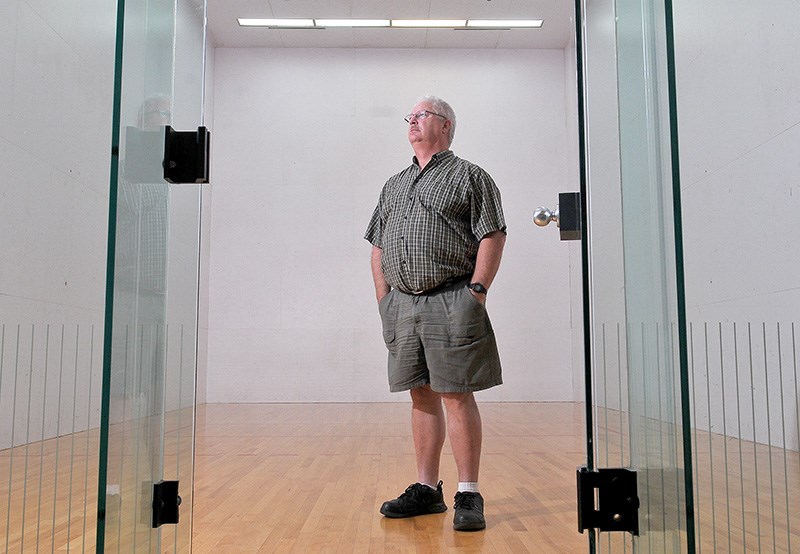Racquetball seemed destined to become the next big thing when Coquitlam’s Calvin Smith fell in love with the sport.
But when Smith and a photographer recently dropped by Hyde Creek recreation centre in Port Coquitlam tor a photo shoot in its one racquetball court, they were informed they had plenty of time, as the court wasn’t booked for the next three hours anyway.
Smith was getting his photo taken because on May 26 he was inducted as a builder into the Racquetball Canada Hall of Fame for his years of service as a top official at 21 international events from 1986 to 2015 and 20 Canadian championships, as well as his tireless work to develop new officials. He also coached and managed national teams.
Smith received his honour at a banquet at the Winnipeg Art Gallery, but unlike Hall of Fame ceremonies for hockey, football and baseball, you would have been hard-pressed to find any coverage on even the most niche of sports specialty TV channels. In fact, the very anonymity of Canada’s racquetball hall of fame, which was started in 2017, may be an indication of where the sport has gone since its halcyon days in the late 1970s and early 1980s.
That’s when Smith, who’d just discovered the sport when he wandered upstairs from the old Brentwood Bowling Lanes in Burnaby and started whacking a ball in one of its several enclosed courts, attended a tournament in Kelowna. More than 600 players from across North America were there, recalled Smith. “Everybody was having fun. It was just a good time.”
Back then, racquetball courts were incorporated into architectural drawings for almost any new racquet club or recreation centre coming down the pipe. Pro players like Marty Hogan got endorsement deals to put their name on equipment. In fact, in a 1978 article about Hogan, Sports Illustrated magazine said racquetball’s popularity had grown from 10,000 to 5.5 million players in a decade and “at this rate, in another 10 years there will be at least a trillion.”
Far from it.
Smith, 60, who’s helped administer the sport at the provincial, national and international levels, said there’s about 6-7,000 active players in Canada. Many courts have closed or been repurposed for storage, cycle spin classes or even daycare play areas.
“It’s a niche game,” he said. “It’s a little sad.”
But even as the sport has declined, Smith’s ardour for it hasn’t diminished. He said part of racquetball’s challenge to catch fire is one of the game’s elements that makes it so fun to play. With top players able to whack the rubber ball at 130 to 160 mph, racquetball’s speed doesn’t translate well to television, and the enclosed court makes it a tough sport to present to live audiences.
“You have a hard time watching it on TV, and knowing what the goal of each rally is,” Smith said.
That lack of exposure makes racquetball a tough sell to young people, Smith said, and there’s not enough impassioned volunteers available to help get it into schools.
Smith said there’s still pockets of interest, particularly in Canada’s wintery provinces like Saskatchewan, Manitoba and Quebec, where recreation moves indoors for months at a time. And the sport is enjoying renewed interest in South and Central America, where it will be included in the 2019 Pan American Games in Lima, Peru.
Still, Smith soldiers on. He plays regularly in Burnaby, at the old Brentwood Lanes where he first learned the sport which is now known as Revs Bowling Centre. And he’s honoured to be recognized for his years of contributions, even if the racquetball hall of fame doesn’t exist as a physical entity.
“It’s a neat feeling,” he said.



